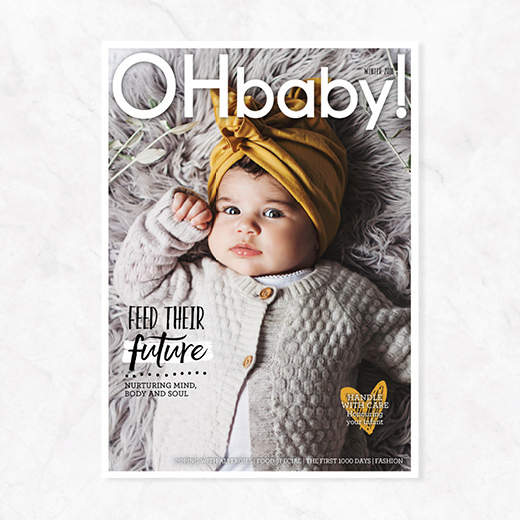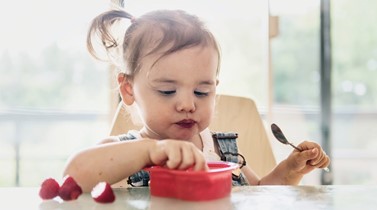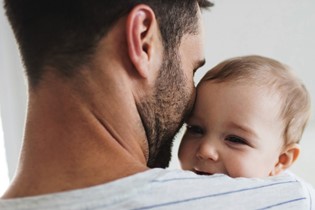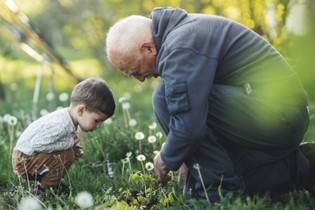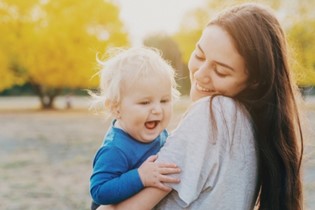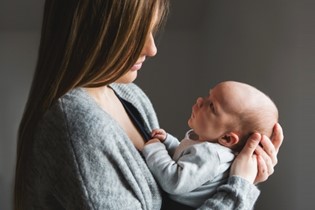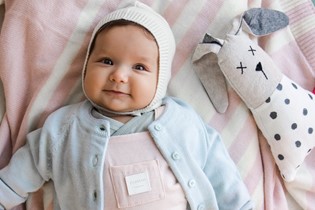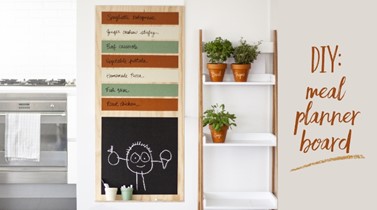The first 1000 days PART FOUR: toddlerdom and beyond
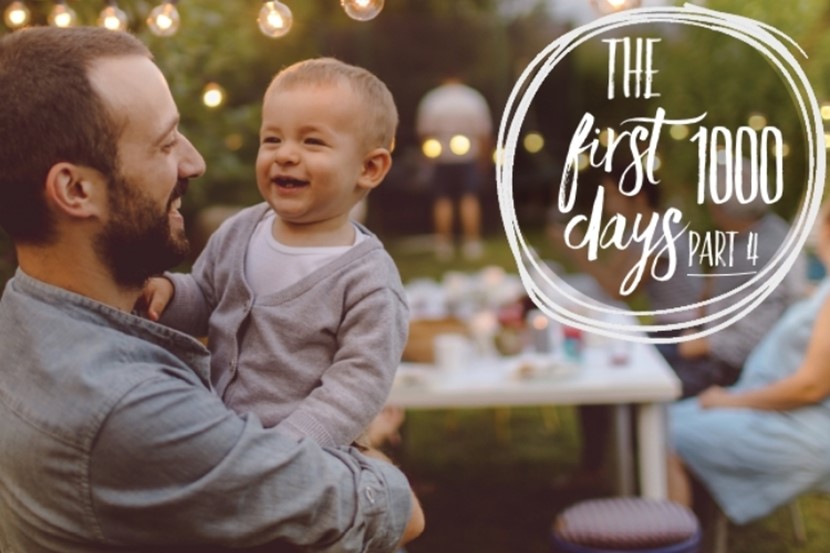
This is the fourth and final article in our series on the first 1000 days of life. Research has proven this a critical and unparalleled window of time with lifelong influence on an individual’s growth, brain development and relationships. Here we focus on days 750-1000: toddlerdom and beyond, from about 16 months to 24 months, and share advice from our experts on how to best nourish hungry minds, bodies and souls.
Back in 2008, the experts agreed: there’s a critical window of time between the start of a woman’s pregnancy and her child’s second birthday where nutrition lays the foundation for a person’s lifelong health and wellbeing. Other experts have been nodding in recognition ever since – these first 1000 days are also critical in terms of lifestyle and relationships; so as daunting as it may sound, as parents we’re responsible for shaping our children's future!
As we focus here on the last quarter of these first 1000 days, you needn't feel intimidated by the task at hand. Your presence, love and attention are seeds that enrich your toddler’s development and will continue to reap fruit well beyond their childhood. Yes, the demand on your energy is high – it’s physically and psychologically draining to keep up with a toddler – but as the saying goes: short-term pain for long-term gain. Remember, your little one is compelled to experiment, their body wired to give it a go. “I do it” is probably a frequent statement in your house these days, and “Why?” an all-too-common question. But their bodies have been asking it, screaming it even, ever since they first tuned into their senses and long before they could wrap their mouths around the words. Rest assured, their quirky little everyday experiments, along with your calm reassurance and explanations, are giving them all the answers they need.
Here the experts celebrate toddlers, in all their boundary-pushing, role-playing, storm-starting busyness, as well as you – their parents – in your daily devotion to meet their many basic needs. Read on for tools to help you power through toddlerdom – and beyond.

OH, BEHAVE!
Dr Melanie Woodfield looks at the developmental journey of toddlers and shares age-appropriate techniques to best support little children with big feelings.
As your baby becomes a toddler, your role changes too. Parenting an infant mainly involves meeting fundamental basic needs: food, comfort and connection. In toddlerhood, you’re still providing these essential things but the interactions with your child are changing. Your child starts to have their own wants and desires, and to express these assertively. They have big feelings and big tantrums. Babies often cry when a physical need is unmet – they’re tired, hungry or wet. Older children cry for other reasons too – anger, fear, disappointment, frustration, uncertainty … the list goes on. This is a normal part of the developmental journey, and thankfully, there are things you can do to help along the way.
Increasing independence
Toddlers becoming more independent can be a relief for some parents, and daunting for others. Depending on your own life journey, and experience of having been parented yourself, you may find different life stages more or less challenging. Coffee group conversations tend to include phrases like “I just love the baby stage – they’re so tiny and vulnerable”, or the alternative, “I love my child, but can’t stand the baby phase – I can’t wait until they’re more independent and less needy”.
Kids around this age like to insist they can do things themselves, even when it’s clear they can’t. They also like to insist that things belong to them (“Mine!”) when they clearly don’t. It’s all part of the journey of development, and the rich and changing lifelong relationship between parent and child.
Too early for discipline?
Young children say and do the cutest things, and it can be oh so tempting to giggle when they come out with “No, go away!”, “You fat!”, or “%#*@!”. I still remember the day when, as a preschooler, one of my children delightedly announced “Telly Tubby!” upon seeing a solidly built woman in a bright tracksuit at the supermarket. Thankfully she didn’t seem to be aware of the show.
Of course it’s fine to have the occasional snigger to yourself and utter that age-old phrase, “They’ll grow out of it”, but toddlerhood is a great time to start putting in place some age-appropriate expectations of your child’s behaviour. Research shows that the earlier parents put in place sensible limits, the easier the limits will be to uphold and the more effective the discipline will be.

Toddler ‘naughtiness’ tends to start small, so it’s the perfect time to practise using sensible and gentle strategies to remind them of what’s okay and what’s not okay. And to introduce them to what you value as a family. Though it’s really important to remember that, with very young children, disruptive or challenging behaviour is almost always a product of struggling with big feelings (technically, emotion dysregulation), rather than deliberate attention seeking, malice or meanness. It’s our job as parents to provide a scaffold or a support system for our children to begin to improve their ability to regulate those feelings of anger, frustration, sadness and worry. So we’re not swooping in with ‘high level’ behaviour management strategies (like time-out) that are better saved for older children, we’re gently introducing age-appropriate expectations and limits, coupled with connection and caring.
Those magic words
It might be that manners are very important to you, and you expect your child to say "Please" and "Thank you". Research suggests that any behaviour which is followed by something pleasant or rewarding (getting hold of a desired object, or having someone you love praise you) is more likely to happen again. So, you might be handing your toddler a mandarin and there’s silence in response. How about trying this – gently keep hold of the mandarin while saying “Say 'ta'”. If your child doesn’t respond, repeat “Say 'ta', for the mandarin”. When your child says “ta”, they get the mandarin, and they hear you saying “Good manners!” in an enthusiastic voice. If they refuse to say “ta”, you gently put the mandarin away. Of course at this point it’s very likely your toddler will protest, probably by crying or trying to pull the mandarin back. Try calmly explaining “You can have the mandarin when you say 'ta' to mummy”, and then waiting. If you’re not engaging with your child’s protest, chances are their tantrum will get temporarily worse before it gets better (this is known as an ‘extinction burst’). If you remain calm, and don’t give in, the tantrum will fade away. If you respond the same calm and consistent way each time, the tantrums will get shorter and less intense. And if you’re consistent and require "ta" every time, very quickly your child will say those magic words.
Just to clarify, I’m not suggesting you starve your toddler in the interests of teaching manners! This exercise could be done with treat food, so it doesn’t matter too much if they don’t end up getting it. And go easy on yourself – start this at home, not when out at coffee group. Otherwise you may feel driven to end your child’s loud tantrum quickly by giving in, and that may accidentally teach them that, if they loudly tantrum, they get what they want – the fastest way to guarantee more tantrums.
Spot the difference
There’s a difference between protest and despair. If your child is crying because they’re scared, sad or distressed, soothe to their heart's content! The only tantrum that can sometimes warrant brief and intentional ignoring is one that’s driven by protesting a reasonable and age-appropriate limit that you’ve put in place. And even then, you can say things like “You’re sad because you want the mandarin. When you say 'Ta', you can have the mandarin”. But it’s best to keep these statements brief and to the point, otherwise your toddler could end up getting more of your attention during their tantrum than they usually do – again, another recipe for more tantrums!
Time-out for toddlers?
You’ll notice in the mandarin example that the only ‘consequence’ for the child is they don't get the extra treat they wanted. For children younger than about two, traditional time-out is not usually recommended. This is because it’s less likely to be effective, as children can’t necessarily make the link between their actions and being placed in time-out (leading to uncertainty and distress when you don't respond like you normally would). And they’re not usually good at sitting still in a certain spot for even a couple of minutes, which can lead to chasing them around the house – hilarious for your toddler, not so fun for you, and not overly effective. Here are some alternatives you might want to try.
Top tools to teach toddlers:
1. Try to limit the number of instructions or commands you give your young toddler. Also try to limit the number of questions. These can both be a little overwhelming if not used sparingly. Instead, try giving a mix of statements – specific praise, things you’ve noticed, descriptions of what your child is doing. If you are giving an instruction, it can make things clearer if you point or gesture to help your child understand.
2. Keep your message – whether it’s praise or information – short and basic. It can be revisited in the future. Long discussions about why a particular behaviour was unsafe, unwise or unkind are likely to flow over a toddler’s head due to their short attention span.
3. Distracting your child and redirecting their attention can be all that’s needed to respond to misbehaviour. Picture the scene: toddler is about to tip the paint on the floor, Mum swoops in with “Oh gosh, that teddy bear Aunty gave you is so cute! Here you go – let’s swap!”.
4. Use your tone of voice intentionally. When praising, make your voice animated and enthusiastic. Make eye contact, and smile. When explaining a limit, have a flat (not harsh or mean) tone of voice. As soon as your child does what you’ve asked, use the enthusiastic smiling tone again.
5. Exaggerate facial expressions and voice tone to help your toddler notice the difference between your enthusiastic praise and your brief ignoring.
6. Be really aware of your child’s (and your own) basic need for food and rest. It’s harder for us all to regulate our big feelings when we're hungry or tired.
7. Along these lines, try to keep track of your child’s earliest signs of frustration or distress, and try to meet their needs at that stage (perhaps with a snack, favourite activity, cuddle or distraction), rather than when things have reached boiling point.
8. Restorative actions, or a sense of making things right again, can be a good goal – whether that’s fixing an object or a relationship with another child. Helping your child to say sorry is a great start. If they don’t seem genuinely sorry, don’t worry at this age.
9. There are so many concepts that we take for granted but toddlers are still developing. For example, the notion that something is more precious and special because it was hard to get, cost a lot, or has sentimental value as it came from a particular person. When you break these concepts down, they’re really complex. So go easy on Junior for not getting it.
A masterpiece in the making
Finally, it's so important to remember that big feelings, tantrums and times of not listening are completely and utterly normal for young children. You’re not a bad parent if your toddler throws a tantrum, despite that look from the person at the supermarket. Even the most compliant, cherubic children are disruptive and non-compliant some of the time. And for toddlers in particular, it’s par for the course. Thankfully, that’s coupled with moments of hilarity and delight, and many times where we’re stifling a snigger at the latest toddler-ism. They’re developing into little people and it’s incredible to see glimpses of the adult they’ll eventually become.
| Dr Melanie Woodfield is a clinical psychologist in Auckland and mother of two. She works for a child and adolescent mental health service and writes and teaches on the side. |

BUSY BODIES
Fitness expert Renée Vincent advises on the importance of movement for toddlers and how, as parents, we can serve as their first coaches.
Development happens dramatically in the first 1000 days. During this time a child transitions from being a newborn with only basic survival reflexes to a fully-fledged preschooler who can run, jump and climb. As a physiotherapist, I observe and analyse movement daily but nothing prepared me for the joy and wonder I have experienced watching my son grow. I found it fascinating to see from birth his innate drive to move, to repeat things over and over, to seek new experiences, to take risks and to stretch his boundaries.
In this article I'll share some key concepts about movement in the first 1000 days to help inspire you on your parenting journey. Not being an expert in child development, I have drawn on the amazing work of Gill Connell and Cheryl McCarthy, who created two fantastic resources for parents: A Moving Child Is a Learning Child: How the Body Teaches the Brain to Think and their Smart Steps programme. You can access these resources at the public library and at movingsmart.co.nz. Although we're focussing here on the 16- to 24-month age range, Moving Smart's resources are relevant and applicable right from the start of a child's life.
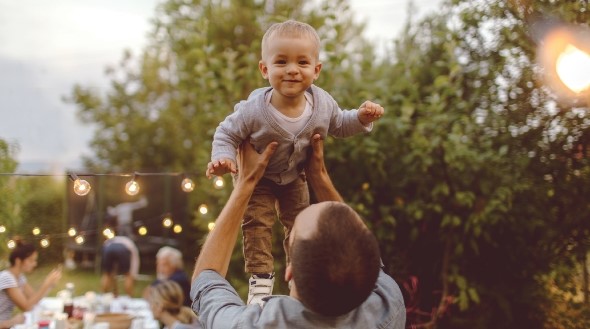
Why is movement so important?
As children have sensory and physical experiences in the world, nerve cells (neurons) in their brain connect. These connections form neural pathways and build foundations on which further learning occurs. In order to get the sensory input to enable the cells to connect and to develop their physical capabilities, a child needs to move. Approximately 90% of the neural pathways in the brain will be established by age five. Through neural plasticity, the brain continues to change and refine throughout life, but most growth and development happens in the early years, hence this early period is so crucial for determining whether a child will be able to reach their full potential.
How the brain learns through movement is complex, so Connell and McCarthy devised a kinetic scale to break down the key elements of movement. Their hope is that this scale will help parents understand what it is that children need in their daily ‘diet’ of movement and enable them to target opportunities and activities to help their children develop in the key areas.
In order for children to be ready to go to school and do things like sit on the mat, hold a pencil, recognise colours and letters, and understand instructions, they need to have had a rich diet of movement from birth and throughout their preschool years. Children need daily stimulation in all the key areas on the kinetic scale, which are:
☙ Senses. Our senses help us understand the world by teaching us what things are, how they work, what we like and don’t like, and exemplifying differences and similarities. All of life's sights, sounds, smells, tastes and textures provide
a child’s brain with the information it needs to interact with the world around it. Therefore children need to experience a rich variety of sensory input and they need movement to seek this out.
☙ Balance. Without balance we wouldn’t know which way is up. Surprisingly, our balance system needs to be fully developed to allow us to stay still (stillness being the most advanced form of balance) while also letting us accomplish complicated physical activities. Balance helps us to concentrate and focus, and this is learned by engaging in movements like rolling, spinning and being upside down, so the next time you see your child lying upside down on the couch to watch television, don’t growl – he’s learning how to concentrate!
☙ Intuition. Our awareness of our body outline, of how much force we need to put into a movement and how we should interact with the space around us is learnt through trial and error. We learn through being cuddled and rocked initially, and then by exploring the space around us as we start to move (eg going through tunnels, carrying, pushing, pulling and navigating inclines).
☙ Power. For children to get to the level of having automated movements, their muscles need to develop enough strength, stamina, agility and flexibility. This development occurs through exploration and repetition of different ways to move (eg crawling, walking, running, jumping, skipping, climbing, tumbling and stretching).
☙ Coordination. This means being able to move two or more parts of the body in synergy. We need to learn how to move body parts from front to back, right to left, or top to bottom through the key midlines of the body – by one side mirroring the other, the sides moving independently or in the opposite manner, or by crossing our limbs over.
☙ Control. To be able to adapt speed, direction and force of movement, a child must build up a large database of movement and mastery of their own body (eg playground games, fine motor activities and stability).
☙ Language. Children use language to translate the experiences they gain through movement into concepts which relate to thinking. When a parent narrates what the child is doing (eg “You’re crawling backwards”), the child understands what crawling feels like, and that they are moving backwards.
How can we help our children reach their potential through movement?
One of the concerns of child-health researchers is that children are getting less and less free play. Connell and McCarthy observe that children are spending more of the day restrained in carseats, strollers, front packs, baby chairs, swings, playpens, exersaucers, walkers or Jolly Jumpers. This means that they are not getting enough time to freely move, and this can impact on their overall development. According to these authors, a preschooler’s day should feature 60% free play, 25% directed free play and 15% structured play. One of the most important things we can do as parents is to not get in the way of our child's movement by containing them too much. Instead, we need to provide safe environments where they can try a variety of movements, have rich sensory experiences, stimulate their balance system, interact with the space around them, build strength and stamina, and practise coordination – all of which will lead to developing control.
We can also help our children by being aware of the milestones they are working towards and becoming sensitive playmates. When we observe what our child is trying to do, we can then join in with them by narrating and gently encouraging or extending them, without taking over or interrupting. It is important to keep your child safe, but it’s also important to allow them to take risks while having you there for back-up.
The happy medium
Safety is on a spectrum – from completely harmless to extreme danger. By getting to know your child through observing and playing with them often, you can allow them to play in the zone of uncertainty which lies midway between the extremes. By stepping in to gently prompt your child through an activity, or by giving just enough help to ensure they are safe (rather than stopping the activity), you are allowing your child maximum opportunity to learn.
As children grow older, movement and physical play allow them to interact with others; learn social skills; experience different emotions as they succeed, struggle or persevere with tasks; and learn to concentrate their attention. As their first coaches, parents can model being active, coach 'fair play' and positive interaction with others, and support children as they set goals and persevere towards them.
Specific activities for different age groups
Sport New Zealand (formerly SPARC) have 16 different publications in their Active Movement series which are great resources for parents looking for ways to encourage their child’s movement. These can be accessed at sportnz.org.nz, and you can also ask your local Plunket for information.
Toddlers and preschoolers
Before you know it, your little one has progressed from their first wobbly steps to confident strides, and they are experimenting with backward walking and even starting to run. By the end of the first 1000 days, they are off exploring the world on their own two feet. The Smart Steps programme mentioned above offers literally hundreds of ideas of great activities to address all the ingredients of movement.
As well as standing, walking and running, toddlers and preschoolers need opportunities to roll, spin, swing and rock. Rolling games on the floor can start with a parent gently assisting a young toddler and move on to rolling up in a towel after the bath, or rolling down slopes for an older preschooler. You can carefully spin your toddler on an office chair or while playing in the water. Always make sure you are keeping your child’s ability in mind, and make sure that they are safe – but able to challenge themselves just enough.
To get upper-body development going you can help your child to swing from monkey bars or do the wheelbarrow (hold their feet as they walk on their hands). Climbing in and out of boxes or through obstacle courses can also be fun.
As your child grows into a preschooler, they may start to ride on running bikes and scooters, which are also great for development, but it is important to allow plenty of time for play that has a rich variety of movement and where you yourself are getting into the action just as much as the children are. Think family bike ride!
The key to getting your children moving – and keeping them moving – is to make it fun, so be prepared to get a little silly and let them take the lead. And remember: the family that moves together, grows together!
| OHbaby! fitness expert Renée Vincent is a physiotherapist at Total Mums in Auckland and mum to an energetic young son. Find her at totalmums.co.nz. Special thanks to Gill Connell, founder of Moving Smart, for her help with this article. Read more about the importance of movement in development at movingsmart.co.nz. |

PERSONALITY PLUS
Miriam McCaleb celebrates the life force of a toddler, and reminds us how our stable care and connection are absolutely key.
Let’s talk about toddlers. First things first: like earlier in infancy, a young toddler is utterly dependent upon the magic of their secure attachment relationships as the foundation for all their learning, growing and development. I just gotta remind you: there is nothing more important to your young child than you are. Full stop. No toy, holiday or outing matters as much as you do. The give-and-take of conversation, the attentive nappy changes, the seemingly never-ending cycles of “provide snack, clean up, provide snack, clean up” … these are the very foundations upon which lives are built.
So … congratulations! Because you’ve made it this far. Your sweet baby is not a baby-baby anymore, and by some measures, your babe has moved into toddlerhood. And I know, people like to catastrophise the idea of life with a toddler, but don’t you despair, mama. Rejoice! Toddlers are great fun. And with a couple of tweaks to your routines and rituals, you’ll find parenting an 18-month-old just as delightful (okay, and just as exhausting!) as it was parenting a teeny baby.
Making sense of the world
Toddlers have so much work to do. They are busy. Their bodies command them to move – to climb, run, dance. They are compelled to understand the 'how' and 'what' of everything, touching the stuff you’d rather they didn’t touch and squishing the things you’d rather not know exist. All that moving and touching and squishing helps massively with the process of wiring neurons and strengthening synapses. They are still wiring brain cells together as rapidly as they were in early infancy, via those ever-changing synaptic highways, and for most of a toddler’s life thus far, the experiences of early life have supported them in wiring the lower regions of their brains. Brains which are working much harder than yours or mine!
First, in early infancy, while we are nestled in the loving arms of our parents and whanau, we experience the world via our senses. Next, as we begin to move (to roll, creep and crawl), we encounter the world through our bodies.
And now things get real. Really, really real. Because in toddlerhood, the emotional regions of the brain (sometimes called the limbic system) are driving things. So while toddlers still experience the world as they did before in those sensory and physical ways, they are now also deeply into the work of emotion.
Validating emotions
You know, sometimes I think this is why people give toddlers a hard time – all that ‘terrible twos’ nonsense I’ve written about previously in this very magazine. If any of us are carrying discomfort about emotion, we run the risk of projecting it onto these wee people. Some of us have been socialised by the wider culture to limit our own experiences of emotions, like the mother whose experience of anger was suppressed by her own upbringing, or the father whose own upbringing squashed his natural expression of sadness.
For some of us, seeing our sweet children being racked by storm clouds of emotion can be kinda triggering. It can be hard to accept a feeling in our kids that we have never allowed within ourselves. So I urge you to have as much compassion for yourself as you do for your toddler as you whisper this affirmation: “Emotion is just emotion.”
Here’s the thing: just like a storm cloud (even a heinous one, with high winds that knock out power!), an emotional cloud parked over a toddler will pass. It will pass! Bear in mind that children under the age of three have very little access to the developmental equipment we need to help us to regulate our emotion. Our higher brains, our lovely prefrontal cortexes, are what we need to regulate emotions, and they are nurtured into being slowly – right up into our mid-twenties.
Offering support
So toddlers learn to feel before they learn how to regulate those feelings. It’s like being in a car with an accelerator and no brake. Lucky for them, they are still squarely supported by the loving parents who cuddled them as tiny infants (that’s you!), and with your patience and guidance, they will continue to develop and flourish, and grow juicy cortexes to boot.
Toddlers are prone to having these emotional storms (aka ‘tantrums’!), and just as we cannot force the weather to change, we cannot force another human to stop having the emotion that they are having. What we can do is offer comfort – offering comfort is different to stopping someone crying. Providing comfort is like saying “I see that you are sad/mad/overwhelmed and I am here to be alongside you while you feel that”. That is a very different message to “Stop crying! You’re being silly! Stop it now”.
Embracing the season
Also, we can try and accommodate a child’s stage as we move through the world. When my youngest was a toddler, we took a trip abroad to see my husband’s extended family. When our cuzzies asked to meet for dinner in bars and restaurants, I risked their ire by setting up lunchtime picnic dates instead. Toddlerhood is not forever, and it doesn’t hurt to give our toddlers every opportunity to slowly, successfully learn the skills of functioning in the social world.
How to soothe your toddler's soul
- Try to be patient with the storm clouds of emotion. Chances are, your toddler is not being naughty or wilful, and s/he’s definitely not terrible.
- Talk less, touch more. Cuddle time and the post-bath massage are as important as they ever were.
- Toddlers are better off with no screen time. The American Academy of Paediatrics make an exception only for Skype calls to family.
- Pay close attention to the basics. We’ve said it before, but we’ll say it again: water, sleep, play, food, rest. Stay warm – but not too hot. These things really matter!
- Do your honest best to stay off your distracting devices (phone, iPad, etc). Research links parental smartphone use to risky (‘naughty’) behaviour in kids, and to childhood injuries.
- Repetition is wonderful for toddlers. It’s appropriate (in fact, it’s awesome) to read the same book hundreds of times, and if you decide to use screen media, you’re better off watching the same DVD again and again than succumbing to the Netflix trap of never-ending novelty.
- Predictability is your friend elsewhere, too. For example, work to keep the rhythm of your routines. Bath, PJs, book then bed (or whatever!). Keep it consistent where possible.
- Do your best to stay playful. Silly noises, funny faces and goofy songs are wonderful, and there are things in this world that you simply must climb.
- Music is your friend. Sing your requests, use your voice to ramp up or chill out. As Kiwi legend Julie Wylie reminds us: “You cannot be cross with your children if you are singing”.
- It’s a toddler’s job to test boundaries. Be as loving as you are able when you calmly stand your ground.
| Miriam McCaleb has been a kindergarten teacher and a university lecturer, and is a certified trainer for PITC. She parents, gardens and writes at home in North Canterbury. |
CLICK ON THE LINKS BELOW TO VIEW ALL OUR 'FIRST 1000 DAYS' SERIES
 |
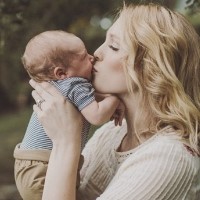 |
| PART ONE: PREGNANCY | PART TWO: BIRTH & BABYHOOD |
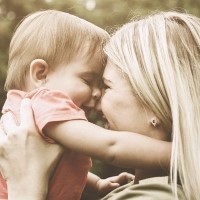 |
 |
| PART THREE: BABYHOOD & TODDLERDOM | PART FOUR: TODDLERDOM & BEYOND |

AS FEATURED IN ISSUE 42 OF OHbaby! MAGAZINE. CHECK OUT OTHER ARTICLES IN THIS ISSUE BELOW
